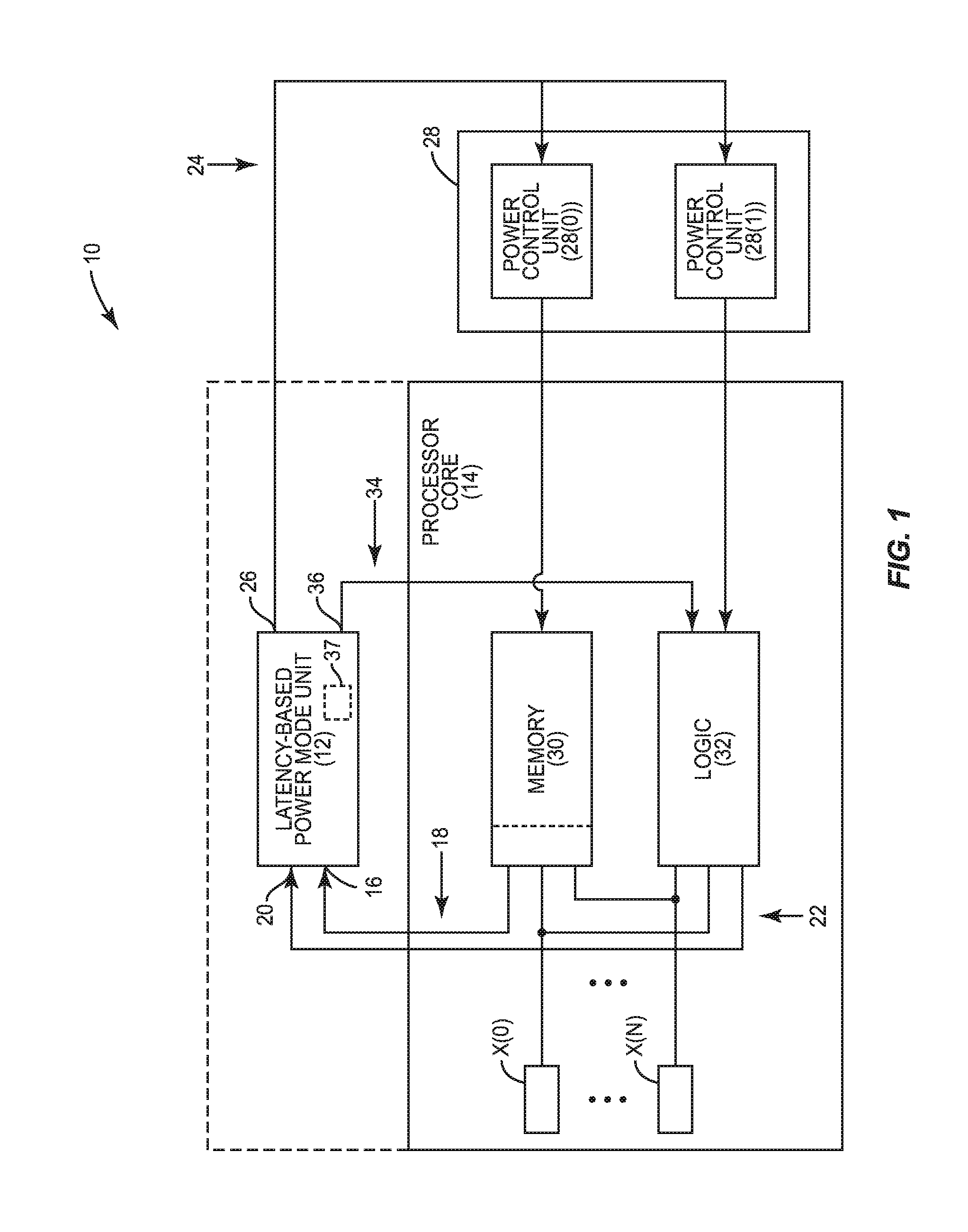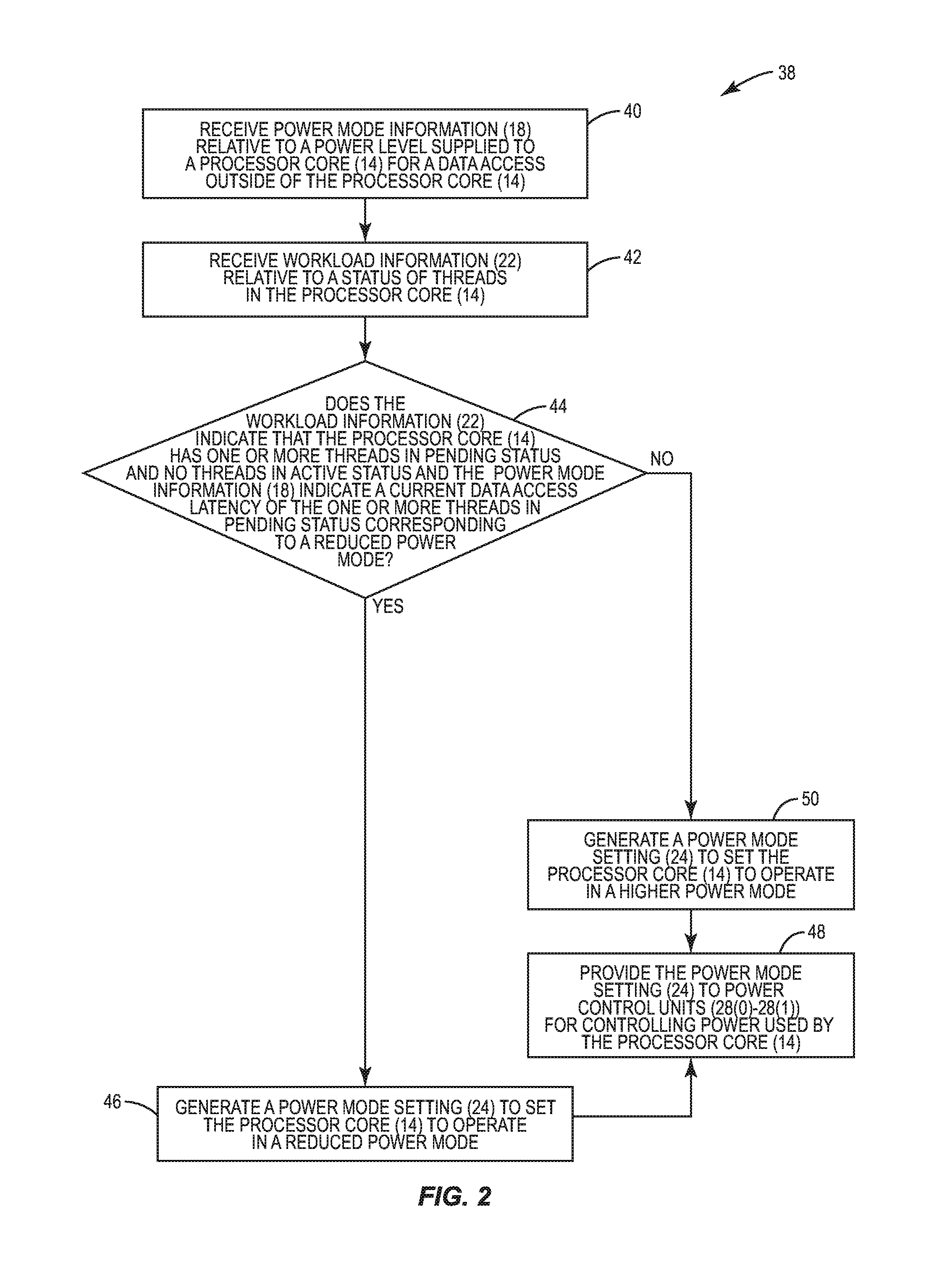Latency-based power mode units for controlling power modes of processor cores, and related methods and systems
a technology of power mode units and processor cores, applied in the field of processor cores, can solve the problems of control unit power collapse of the processor core, the processing instructions within the processor core contribute to the overall power consumption of the corresponding cpu, so as to reduce the power consumed by the processor core, conserve power, and save power
- Summary
- Abstract
- Description
- Claims
- Application Information
AI Technical Summary
Benefits of technology
Problems solved by technology
Method used
Image
Examples
Embodiment Construction
[0020]With reference now to the drawing figures, several exemplary aspects of the present disclosure are described. The word “exemplary” is used herein to mean “serving as an example, instance, or illustration.” Any aspect described herein as “exemplary” is not necessarily to be construed as preferred or advantageous over other aspects.
[0021]Aspects disclosed herein include latency-based power mode units for controlling power modes of processor cores. Related methods and systems are also disclosed. In this regard, FIG. 1 illustrates an exemplary central processing unit (CPU) subsystem 10 employing an exemplary latency-based power mode unit 12 for controlling a power mode of a processor core 14. The processor core 14 has a plurality of threads X(0)-X(N) that are each configured to provide concurrent processing, where ‘N+1’ is equal to the number of threads. However, the processor core 14 could include only one (1) thread. As discussed in more detail below, the latency-based power mod...
PUM
 Login to view more
Login to view more Abstract
Description
Claims
Application Information
 Login to view more
Login to view more - R&D Engineer
- R&D Manager
- IP Professional
- Industry Leading Data Capabilities
- Powerful AI technology
- Patent DNA Extraction
Browse by: Latest US Patents, China's latest patents, Technical Efficacy Thesaurus, Application Domain, Technology Topic.
© 2024 PatSnap. All rights reserved.Legal|Privacy policy|Modern Slavery Act Transparency Statement|Sitemap



